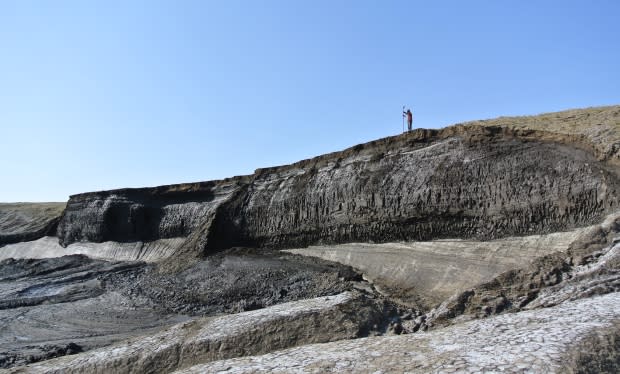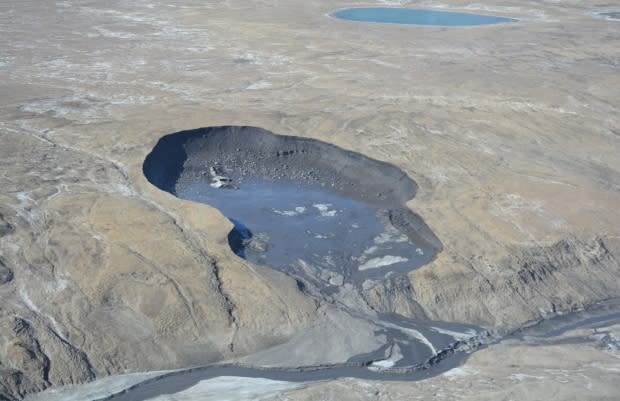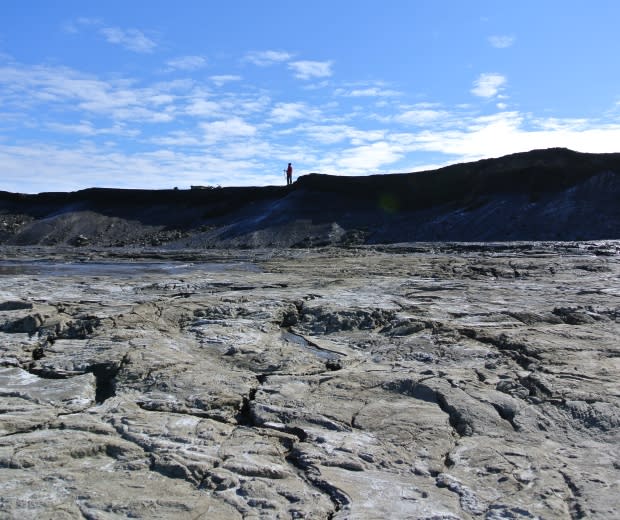In the High Arctic, researchers find permafrost thaws are changing the landscape
They show a landscape that is otherworldly and sublime, but the photos from the High Arctic nonetheless capture foreboding signs of a climate changing even faster than expected.
Near the 80th parallel, McGill University researchers have documented significant degradation in permafrost — earth that has been below freezing for two or more years — that was previously believed to be stable.
The degradation is visible from the air as collapsed earth — spans of land that are sinking into horseshoe-shaped craters.

"Generally, when you think of the Arctic you kind of see the map and think that that area should be OK because it's so far north, but our results show that that's not the case," said Melissa Ward Jones, a PhD candidate at McGill University's geography department and the study's lead author. "This area is also vulnerable to change."
In the area they studied, the Eureka Sound Lowlands on Ellesmere and Axel Heiberg Islands, the permafrost is more than half a kilometre deep, and the average air temperature is –19.7 C.
The craters are called retrogressive thaw slumps, and the study found that higher summer air temperatures were causing them. The research uses nearly 30 years of aerial surveys and ground mapping.

Those warmer temperatures have melted the ice locked in the permafrost, Ward Jones said.
"If that ice melts out, that ice was occupying a volume within your soil and so, if it melts, you lose that volume," she said. "And so it lowers the landscapes, and it changes the surface."
The largest thaw slump Ward Jones measured was 17,000 square metres — about the size of two Canadian football fields. But she said she saw larger ones from a helicopter.

Once a slump is formed, subsequent thaws can cause it to expand in size, the researchers say.
"If temperatures keep increasing, we'll see more and more degradation occurring," Ward Jones said. "And that degradation will cause a bunch of ecosystem and environmental changes.
"We're not exactly sure what those mean, but further research will be able to answer those questions."

